
The Olinde Career Center at LSU launched Talking Tiger Talent as a way to modernize and scale the center’s employer outreach efforts.

When the University of Texas University Leadership Network launched in 2013, it had two main goals that remain in place today: to help students graduate in four years and to provide students who are under-resourced with an opportunity to participate in various forms of experiential learning without having to work.

The North Dakota State University Career and Advising Center team has found that its Employer Town Halls held via Zoom are a great way to disseminate information in a different format than just an email.

Hybrid and in-person remain the preferred work modalities of employers for both their overall and entry-level positions, which matches the ways students prefer to work, NACE research has found.

The University of North Florida (UNF) has historically offered innovative programs, services, resources, and events to ensure students are successful and career ready by the time they graduate. This approach led leadership to embark on a new path at the intersection of UNF’s core functions and NACE’s career readiness competencies.

The College of Arts and Sciences at Indiana University Bloomington recently launched its Pillars Undergraduate Experience, a framework designed to prepare students for academic achievement and lifelong career success.

Hyster-Yale Materials Handling is developing a pre-onboarding program to engage and build excitement among its interns prior to their start date next summer.

To produce career-ready graduates, the Lehman College School of Business intentionally equips its students with competencies through the promotion of applied learning in its three programs.

Matt Purdy of Murray State advises career services professionals to think about the resources they are trying to obtain and find data that not only align with what they are asking for, but to connect them to the priorities of their administration or institution.

The Georgia Tech Career Center, large-college winner of the 2024 NACE Career Services Excellence Award, hired eight new staff members across various functional areas within the office in a process that aligned with the institute’s DEI Blueprint to, in part, closely reflect the demographics of Atlanta.

The employer winner of the 2024 NACE Technology Excellence Award, Freese and Nichols implemented talent acquisition platform Yello and modified its roles and processes related to its on-campus career fair strategy to significantly increase its university hiring.

The University of Dallas career development office listened to student feedback to pivot from texting students career-related information to sending messages via email. The results have been impressive.

Despite calls to “return to the office” from employers and the prevailing media narrative, the hybrid work modality appears here to stay.

In an ever-evolving landscape, career services needs to adapt and innovate. Here, Hassan Akmal discusses how career services can reimagine itself to meet the needs of students and alumni.

BYU works to help students understand that they have these transferable skills and competencies that can be used in a variety of ways in a variety of situations.

In a unique interview with ChatGPT, NACE asks the AI language model how it feels about its use as a tool in the job search, career readiness, and talent acquisition; the ethics of its use; and more.

What are some key considerations and steps for employers to take to create long-lasting, mutually beneficial partnerships with HBCUs and PBIs?

Interviews with diversity, talent, and industry experts revealed confusion, conflation, and a general lack of conceptual clarity around fundamental differences in DEI& B in their organizations.

Research conducted by NACE and The Center for the Study of HBCUs underscores how important it is for companies to conduct audits to assess gaps and inequities in their recruiting efforts.

The amount of time for students participating in a job interview to receiving an offer has increased over the past several years, but the time they take to accept the offer dropped in 2022.

College graduates in their early professional careers report significant mental health issues and view their jobs as a contributing factor. How can employers and colleges provide support?

The percent of interviews resulting in a job offer has climbed to its highest level of the past five years, but acceptances and retention rates for the first three years of employment fell.

Liberty Mutual takes a very targeted approach to the sources of talent they try to attract, engage, and hire. This extends far beyond a traditional target school list.
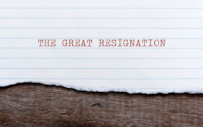
News articles shout about the continuance of the “Great Resignation” or “Great Reshuffle” across all industries. As of July 2022, the U.S. Department of Labor (DOL) reported that quit rates (individuals voluntarily separating from their organization) continue to hold steady in the field of education, with more than half a million exits since the beginning of 2022.

The University at Buffalo’s Career Design Center has put an emphasis on maximizing available technology tools that can improve operations and better meet the needs of students and employers.

The average number of full-time URR staff members that organizations employ decreased to 13.5 from 14.3 last year.

The M&T Bank talent acquisition unit’s partnerships with employee resource groups (ERGs) has yielded a range of benefits, such as helping to identify internal talent, providing training opportunities, improving engagement across the organization, and boosting retention.

On average, there were 8.5 full-time recruiters per recruiting department within organizations replying to NACE’s 2021 Recruiting Benchmarks Survey.

University of Idaho Career Services created the “Career Services Internship Certificate Program” approximately five years ago to give undergraduate interns the knowledge, skills, and abilities to transition to the professional workforce.

In recent years, the overall knowledge rate of Davidson College’s first-destination survey (FDS) has been near or above 90%. Davidson has found several steps—such as getting an early start, using texts, and providing tailored information—to be helpful in attaining and maintaining a high FDS knowledge rate.

“Speed interviewing gives students strong, real-world practice on their interviewing skills in a low-pressure environment,” says Susan Proctor, who is the employer development manager in the career center.

While looking to use gamification to create a fun and interactive career development program for her students, Merry Olson hit on an idea that has created much interest among career services practitioners.

There are two types of people in the world of career services: people who know about JLD and those who have not heard about it yet. It is a tad obscure and vague; however, it can have a significant impact on a student’s educational journey and pathway to career success.

Intern conversion is a business imperative at all times, but especially in the current job market, when many organizations respond to the impact of the coronavirus pandemic by shrinking programs and budgets.

The Community College Research Center (CCRC) at Teachers College, Columbia University recently published a new practitioner packet that provides guidance to colleges seeking to redesign their new student onboarding practices.

Career fairs are part of the lifeblood of career services programs—and important events for students and potential employers. Many career centers are thinking of moving their career fairs online in the fall.

While virtual internships are essential in the current work environment, it is important to recognize that many benefits of a traditional internship are lost when internships are done online, says Matthew Hora.

Yale University’s Office of Career Strategy is undertaking an aggressive personal outreach effort to graduating students who indicate they are “still seeking” on the university’s first-destination survey.

The employers that could best weather the coronavirus pandemic in terms of their college recruiting programs will find ways to adapt to current conditions and still deliver on the aspects of their programs that are most important to college students.

Online education, as we think of it today, emerged more than 20 years ago as the growing internet gave rise to a new way to deliver learning: distance learning. As the tools for distance learning have become more prevalent and, more importantly, interactive, access to education has expanded.

In this time of disruption and uncertainty caused by the coronavirus pandemic, when many career services practitioners are working from home, it is crucial for them to stay connected, says Tammy Spenziero, who is in a unique position to offer guidance on working remotely.

Career centers are being housed less frequently in student affairs, more frequently in other divisions, and increasingly in various parts of the institution.

Among respondents to a recent NACE quick poll, more than half of the association’s employer members and more than two-thirds of its college members reported experiencing burnout.

There are several research-based practices employers can implement to achieve greater success in recruiting and developing interns from HBCUs and PBIs.

Schools that conduct an annual FDS to capture information on how their new college graduates fare following graduation can benefit their own institutions and demonstrate the value of higher education.
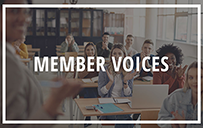
Colleges must work to ensure that students are aware that skills they’re using and developing in the classroom can be an asset after entering the workforce.

At the University of Nevada, Reno the career center became the Career Studio, where students never need an appointment. All career advising is done by undergraduate students; the professional team focuses on all other aspects of career development.

Richmond merged career services and alumni services to elevate career services, provide additional resources for students, and more deeply engage alumni.

When it comes to maximizing job fair attendance, there’s bit of quick advice from the NACE Community: Don’t hold job fairs on Friday.

Coaching is the primary focus regarding the career development of students and the professional development among career services staff.
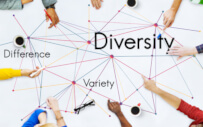
Career centers play a critical role in supporting diversity, equity, and inclusion.

The current drive to better understand and anticipate the future of career services may be distinctive in that it is influenced by certain environmental factors that threaten a potential sea change in higher education.
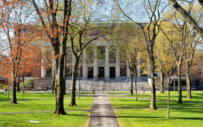
Given the increased attention to career outcomes from both government and university administrations, one would expect a significant commitment on the part of the university to the career services office. This commitment could be measured in terms of critical resources expressed as either added dollars or increased personnel to handle the increasing difficulty of counseling students to succeed in a depressed job market. Using data from two installments of NACE’s annual Career Services Benchmark Survey for Colleges and Universities (2007 and 2014), this article examines the strength of that commitment.

A common mistake many companies make when building a university recruiting (UR) program is to focus on identifying core schools first. While this is a critical task, it’s not one of the first steps to tackle, especially if you need to build a university recruiting program when funds are low. Many companies have tightened their belts in recent years, so UR professionals must be creative with limited resources and human capital; it’s all about delivering more with less. As such, your first order of business should be to look inside instead of outward.

INROADS has co-developed a program to help organizations recruit students at a greater number of HBCUs across the United States for paid internships.

There are specific actions that institutions and organizations can take to ensure that they create a culture that supports the personal and professional growth of Black individuals.

During a recent NACE Town Hall, panel members shared experiences and offered ideas for moving ahead with diversity, equity, and inclusion.

How do we support students who have been marginalized or who may feel unsafe around law enforcement while also supporting employers in law enforcement?

Language is a key element of diversity, equity, and inclusion, and can help or hinder efforts in this area.

There are several key steps that organizations can take to best support “onlies” and provide a healthy space for them to excel at work.

The U.S. Department of Labor allocates billions of dollars annually to support education and career development activities. Federally financed career development services is guaranteed and ongoing funding mandated by WIOA is potentially available to all college and university career centers. This article explores how Ohlone College’s career center tapped federal funds to help finance career services for its students.
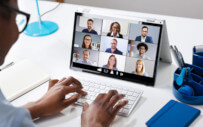
How do career services offices handle their for-credit career courses? NACE members share their approaches.

The likelihood of students becoming paid interns increases if they went to the career center for internship assistance.

Not only can workplace discrimination and microaggressions have a negative impact on people of color in their careers, it can affect their mental health.

Throughout the spring, the URR functions of employers in the transportation industry were particularly hard hit by the coronavirus pandemic.

The reopening plan developed by the UNLV College of Engineering aims to minimize direct contact for services that can be effectively delivered online.

PwC is providing its more than 3,600 summer interns with an experience that is preparing them for the new virtual world.

Following the Great Recession a little more than a decade ago, many organizations learned a costly, yet valuable, lesson.

Students with hearing loss may face challenges associated with communication that may be exacerbated during this pandemic, with requirements for wearing masks and physically distancing.

Career services staff share their plans and ideas for how they might handle drop-ins in an in-person or virtual environment this fall.

Companies that currently do not have jobs or internships should try to provide students with learning engagement support or development, and strive to make connections with them.

Swinburne University created the AccessAbility Careers Hub, which provides targeted career education for students with disabilities.

How do career centers handle alternative experiential learning experiences such as contests and hackathons that may not fall into a college’s or university’s internship bucket?

Matthew Cowley warns that any trend that emerges that is considered to be a best practice could potentially threaten equitable outcomes for marginalized students.

Last March, a group of five Florida schools shifted their joint in-person reverse career fair to a virtual “venue” in just two weeks, but with positive results.

In this new era of social distancing, what is replacing the firm, professional handshake?

CDK Global’s retooling of its internship offboarding process has expanded opportunities for interns to stay connected with the firm.

The guarded optimism of early June has faded into the reality that the COVID-19 pandemic has had a significant impact on college enrollments for the fall.

NACE members offer ideas for managing the career center staff’s interactions—whether in person or virtual—this fall.


Abbott Laboratories’ high school internship program exposes students from diverse backgrounds across the United States to STEM fields.

WCU’s career center and autism program developed a sensory-friendly event where differently abled students feel more comfortable and confident interacting with recruiters.

Larger companies are more likely to recruit virtually during the 2020-21 academic year, according to a forthcoming report from NACE.

Although AOIC requires potential interns to be enrolled in college, in certain cases, summer interns who did not return to school because of COVID have been allowed to stay on.

Does your organization run a background check immediately after making an offer or closer to the new hire’s start date? URR professionals in the NACE Community share their approaches.

MI GEAR UP is a statewide program designed to provide support to students from high schools in low-income areas who are making the transition to college and throughout their first year there

Some career centers are noticing a decrease in employer and student registration for virtual career fairs. What strategies might increase the number of employers attending?

By the end of April, more than half of employers planned to move their internship programs to virtual and nearly half expected to delay intern start dates in responses to the pandemic.

Empower Retirement is moving away from assessing candidates for “culture fit” by aligning values and providing hiring managers with interview questions and language.

Last spring, career services offices were asked about the main ways in which they were engaging students, as nearly all contact had become virtual. In addition to email, phone calls were a popular tool.

The percentages of career centers offering virtual career fairs and employers taking part in them has climbed steeply this fall.

The value of Eaton Vance’s summer internship program is evident in the attention the firm dedicated to its transition to virtual last spring and its management last summer.

How do virtual internship programs compare with their pre-pandemic counterparts? NACE members share what they have heard from students about their virtual summer internship experiences.

Visibility and the tiering of school partnerships are two of the challenges Historically Black Colleges and Universities face in attracting employers to recruit their students.

While DREAMers tend to have qualities employers seek, there are several obstacles they face that career services professionals can help them navigate during the job search.

Many businesses and organizations are unclear about their ability to hire DREAMers who have DACA or TPS. In fact, employers are able to hire a DREAMer just as they would a U.S. citizen.

Offering regular activities keeps interns engaged with the organization, which is crucial, especially in a virtual environment.

By better understanding and accounting for the obstacles Native students face, career services and university relations and recruiting professionals can help them achieve their career goals.

Having a formal policy helps the team in the University of Oregon’s career center team with consistency when considering postings from employers seeking unpaid interns.

Building trust with TCUs and Native students and bridging gaps in areas of need will aid employers in their recruitment efforts.

Many challenges with managing an internship program as a sole URR practitioner can be overcome by being resourceful, especially by involving colleagues.

More than 40% of employers are planning to hold a hybrid internship program this summer. Also, the highest percentage prefer to attend both in-person and virtual career fairs.

While many institutions and organizations have stepped up their inclusive communication—especially over the past year—some still fall short.

Career services can play a vital role in helping student veterans realize their goal of meaningful employment after graduation.

Employers that hire student veterans have the benefit of hiring employees who have already received “the world’s best leadership training.”

The New College of Florida’s SMAH Internship Program has a twist in its approach that distinguishes it from other programs that fund students’ unpaid internships.

The lessons Cree Wolfspeed’s URR team learned during the COVID-19 pandemic have helped inform their preparation for this summer’s program and beyond.

It’s not surprising that fees for in-person career fairs were down sharply in 2020-21 compared to 2019-20, but the charges for hybrid fairs jumped for some employers.
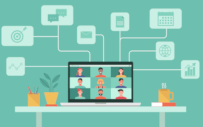
The number of offers accepted by Cigna’s 2020 cohort of virtual interns indicates that the company’s conversion strategy was successful. There are several key reasons for this success.

During the pandemic, only 22% of college students took an internship, half were in-person positions, and quality indicators for online internships were low, according to a new study.

When one HBCU career practitioner is building relationships with employers, she is looking for authenticity, a shared sense of purpose, and impactful engagement opportunities for students and the university as a whole.

Over the course of the week-long NACE21 conference, it became clear that several topics—such as the new normal, professionalism, and career readiness—weighed most heavily on attendees.

NYU’s Wasser-Buddies mentoring program helps shape institutional culture, equalize the experience of new hires, increase knowledge transfer, and enhance leadership development.

Most career services offices plan to hold both in-person and virtual career fairs this fall, but many employers expect to hold their own virtual events.

This fall, the majority of employers will be hosting their own virtual recruiting events, such as Zoom sessions, virtual tours, and virtual career fairs.

College career services offices have changed the ways they engage employers and students from historically marginalized groups during the COVID-19 pandemic.

In response to the ongoing COVID19 pandemic, employers are most commonly offering a hybrid internship program this summer.

Many employers that shifted their internship programs to virtual during the pandemic plan to make virtual assignments part of their internship programs in the future.

While the COVID-19 pandemic caused many adjustments to the ways career services offices operate, they did not make substantial changes to their employer relations strategy.

Talent acquisition professionals provide insight and ideas on topics around internships, such as converting interns to FTEs, internship duration, and more.

The shift to the virtual space has allowed for collection of career fair data that may have been out of reach with the traditional format.

The University of Nebraska at Kearney’s College of Business & Technology Career Center verifies internships to ensure they meet key criteria for their students.

Instead of pausing its college recruiting operations during the pandemic, NCR shifted its focus from on-campus to on-screen engagement, while always putting the students first.
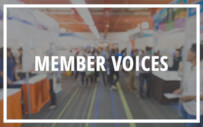
While many schools have seen fewer students attend both virtual and in-person career fairs, schools must consider other options to foster employer-student relationships.

In response to the climate of racial injustice, Dell expanded its definition of recent graduate talent to engage underrepresented minorities.

As NI went through increasingly rapid changes due to shifts in the market, it became clear that significant adjustments were needed to its programs and strategies.
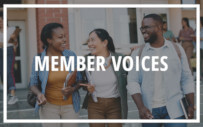
When working with employer partners, career services teams must keep in mind that career centers are not staffing agencies and student needs must come first.

To implement and foster an inclusive climate in higher ed, institutions need to create a culture of belonging, attract diverse talent at the entry level, and build intentional pathways to retain diverse talent.

Career center staff should vet job postings as thoroughly as possible before posting them to avoid posts that are fraudulent or discriminatory.

Career services professionals should know the key points of the Family Educational Rights and Privacy Act (FERPA) and how they can ensure their institutions are in compliance with FERPA’s requirements.

Over the last two years, the nature of employment has shifted, and college career services may need to adjust to more closely align with these changes.

Many career services professionals are asked to prescreen candidates for employers—to identify their “best” students. So, too, are faculty members. Beyond a host of ethical issues involved in such a request, there are legal implications.

Dr. Julia Overton-Healy of St. John Fisher College suggests career services offices need to recalibrate their understanding of who their students are and make changes to accommodate them.

Last fall, VCU began offering its Interdisciplinary Career Readiness Skills minor, an 18-credit pathway for students to develop today’s most highly sought-after job skills.

In today’s marketplace, college students may be offered a wide variety of employment opportunities. The following information should help career services professionals advise their students on the nature of these opportunities.

Many employers plan to operate in a hybrid modality, blending in-person and remote work to give their employees and new hires the best of both worlds.

One of the barriers that prevents more employers from partnering with community colleges is a general lack of understanding about what these schools and their students can provide.

NACE members share their ideas for fun, useful items that career centers can give to students during career fairs.

Auburn University’s high knowledge rates on its recent first-destination surveys is driven by the survey being part of a course all students are required to take.

With an eye toward the future of its workforce, Mohawk Industries provides its candidates and new college hires with development that extends beyond the internship.